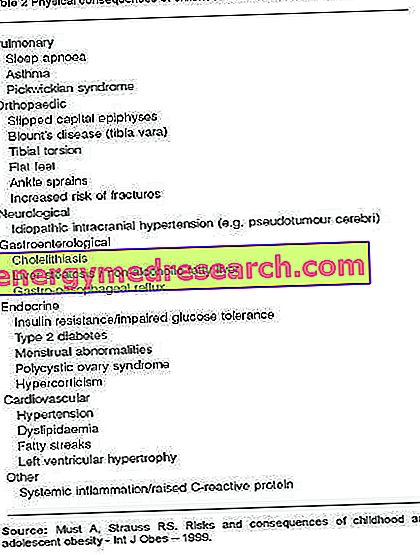Generality
Shiatsu massage is a type of massage of Japanese origin .

It is a form of massage belonging to the large and varied group of oriental massages . The purpose of the Shiatsu massage - similar to other types of oriental-derived massage - is to act not only on the body but also on the psyche, making the individual achieve a state of well - being in its totality (body and mind) and not only to physical level.
The typical manipulation techniques of shiatsu massage involve the execution of tractions and pressures, the latter carried out above all with the fingers but also with the palms of the hands, with the wrists, with the knuckles and with the elbows.
Even if it is not a real medical treatment but a massage that can also be practiced in beauty centers and spas, it is advisable to refer only to professional and accredited masseurs who work in qualified facilities. In fact, a wrong manipulation, as well as a Shiatsu massage done even in the presence of contraindications, could negatively influence the state of health of the individual.
What is that
What is Shiatsu Massage?
The Shiatsu massage is a form of oriental massage, more precisely originating in Japan, whose purpose is to bring well-being and balance to the individual as a whole, therefore not only on a physical level, but also on a mental level, restoring harmony between these two components.
What is it for
Purpose of Shiatsu Massage
According to the philosophy behind the Shiatsu massage, in the body of each person there are so-called meridians within which flows a vital energy known as " ki ". The alterations and the blockage of the flow of this vital energy would lead to the appearance of imbalances, malaise and disorders in the individual.
The purpose of the Shiatsu massage, therefore, is to remove any blockages and restore the normal flow of ki energy, so as to allow the individual to achieve a new state of relaxation, well-being and psychophysical harmony .
More in detail, according to those who practice it, Shiatsu massage should be useful in the presence of:
- Stress and anxiety (not pathological);
- Insomnia;
- Depressive symptoms of a non-pathological nature;
- Articolar pains;
- Cervical pains;
- Muscle pains and / or tensions;
- Disorders of blood and / or lymphatic circulation;
- Headache;
- Digestive disorders;
- Menstrual disorders.
How to practice
How is Shiatsu Massage performed?
The Shiatsu massage should be practiced only by professional and qualified masseurs who are thoroughly familiar with the handling techniques that characterize it.

Traditionally, Shiatsu massage must be performed on the classic Japanese tatami, directly on the ground, in a quiet and noisy environment .
Furthermore, unlike many other types of oriental massage, Shiatsu does not require the use of oils or essences and does not even require the need to remove clothes, provided they are light and allow the masseur to do his job (for example, cotton trousers and shirt). Nevertheless, in some SPAs Shiatsu massage is done directly in contact with the individual's skin.
Preliminary interview
Before proceeding with the execution of the Shiatsu massage, the masseur should undergo a preliminary interview with the person, in order to understand his " energy condition ". In this context, moreover, the serious and professional masseur should also be informed about the general state of health of the individual, asking for information about the possible presence of some disorder or pathology that could represent a contraindication to the execution of the massage.
In any case, remember that if you suffer from particular disorders or diseases, as well as if you are undergoing - or have undergone from recently - drug therapies, before performing the Shiatsu massage, it is always good to ask the opinion of the own doctor.
Performing Shiatsu Massage
Once established the possibility of resorting to Shiatsu massage, the person is seated on the Japanese tatami placed on the ground; after which the masseur can start the treatment by working on his knees .

The manipulations carried out during the session substantially involve the execution of tractions, stretching and pressures, the latter are practiced above all with the fingers ( finger pressure ), but also with the knuckles, with the wrists, with the palms of the hands and with the elbows . The pressures are usually deep but are carried out in a gentle and gradual manner, so as not to create feelings of discomfort, or worse, pain in the massaged.
Typical manipulations of Shiatsu massage should follow the individual's energy pathways; the pressures, in particular, should be exercised perpendicularly to the body of the massaged person (which is why the masseur should work on his knees) and should be concentrated in the points where the energy blocks are present that the Shiatsu massage expert should be able to recognize. The areas on which the masseur works are the back, the abdomen, the neck, the head, the arms and the legs.
A Shiatsu massage session generally lasts about 50-60 minutes . Usually, treatment cycles are performed consisting of a number of sessions that can vary depending on the problems afflicting the massaged.
Types
Types and Variations of Shiatsu Massage
The types and variations of Shiatsu massage currently existing and practiced are really many; despite this great variety, they are all based on the same philosophy and on the so-called " five pillars ", represented by:
- Breathing (breathing is considered to be a very important aspect for a successful massage);
- Posture (the masseur must assume the right posture to perform the manipulations);
- Perpendicularity (the massage and the pressures must be perpendicular to the massaged body);
- Pressure (pressures must be gradual and deep, but still sweet and must not create discomfort);
- Sensation (of pleasure or pain).
Starting from the philosophy of vital ki energy and the five fundamental pillars, over the years different types of Shiatsu massage have been developed that have given rise to numerous styles. Below, we mention only a few:
- Style Namikoshi : it is a style recognized by the Japanese Ministry of Health because it integrates the traditional knowledge of Shiatsu massage with knowledge derived from Western medicine. It is a type of massage that focuses particularly on symptoms and is mainly used in the prevention and treatment of disorders related to blood and lymphatic circulation, the endocrine system and the nervous system.
- Masunaga style : also known as Zen Shiatsu, this particular style of Japanese massage aims to restore the general balance of the organism, especially through the relaxation of muscles, the regularization of breathing and body temperature.
- Ohashi style : unlike the other styles, the Shiatsu Ohashi massage is based on the communication between massaged and masseur and aims to establish well-being and harmony in both. The manipulations carried out in this type of massage are characterized by particularly exploiting the force of gravity and continuous movements in order to dissolve both physical and mental contractions, thus favoring the flow of energy.
- Koho style : it is a style based on both traditional Japanese knowledge and knowledge of traditional Chinese medicine. It is characterized by the use of pressures carried out with the thumbs along the sixteen meridians of the body.
Expected benefits
What benefits should Shiatsu Massage bring?
According to its supporters and practitioners, the Shiatsu massage should be able to restore the normal flow of ki vital energy, counteracting any psychophysical disorders resulting from its alteration or its blockage.

Such restoration should, therefore, allow the achievement of harmony and well-being of the individual as a whole. In addition, according to those who practice it, the Shiatsu massage should also be able to:
- Reducing states of stress and anxiety (non pathological) favoring a state of psychophysical relaxation;
- Combating insomnia;
- Relieve joint disorders and pains;
- Promote joint mobility;
- Improve posture;
- To counter or alleviate cervical pains;
- Dissolve muscle tension and counteract any pain;
- Relieve headaches;
- Promote and improve blood and / or lymphatic circulation;
- Exercise a beneficial action inside the body, reducing the discomforts connected to the menstrual cycle and the discomfort due to the presence of gastrointestinal disorders.
According to some of the sources consulted, in addition, Shiatsu massage would also be able to stimulate the body's ability to self-heal, improving its ability to react to external attacks or disorders that afflict it.
Please note
Most of the benefits attributed to Shiatsu massage are not confirmed or supported by adequate scientific studies conducted on the subject. On the other hand, there are several people who, having undergone Shiatsu massage sessions, declare to benefit from it. In particular, since it is a massage, it is likely that it can promote relaxation - both physical and mental - and that it can at the same time dissolve any muscular tension, relieve minor pain in joints, muscles and cervical or improve blood circulation and lymphatic.
In any case, the importance of addressing professional and qualified masseurs is reiterated.
Contraindications
When Shiatsu Massage must NOT be practiced
Although Shiatsu massage is considered safe, as with many other types of massage, there are several situations in which its execution is contraindicated. In detail, it is contraindicated to undergo massage if you are in one or more of the following conditions:
- Current skin infections;
- Inflammations and / or wounds in the areas to be handled (including inflammation of the sciatic nerve);
- Presence of cardiovascular disorders;
- Recent fractures;
- Herniated disc in the acute phase;
- Respiratory disorders;
- Tumor disorders;
- Liver and / or renal disorders.
Pregnancy is usually not a contraindication, however, it is always good to ask your gynecologist for advice.
In any case, if you suffer from disorders or diseases - even if not listed in the aforementioned list - you should ask for the preventive advice of your doctor before undergoing any form of Shiatsu massage.



